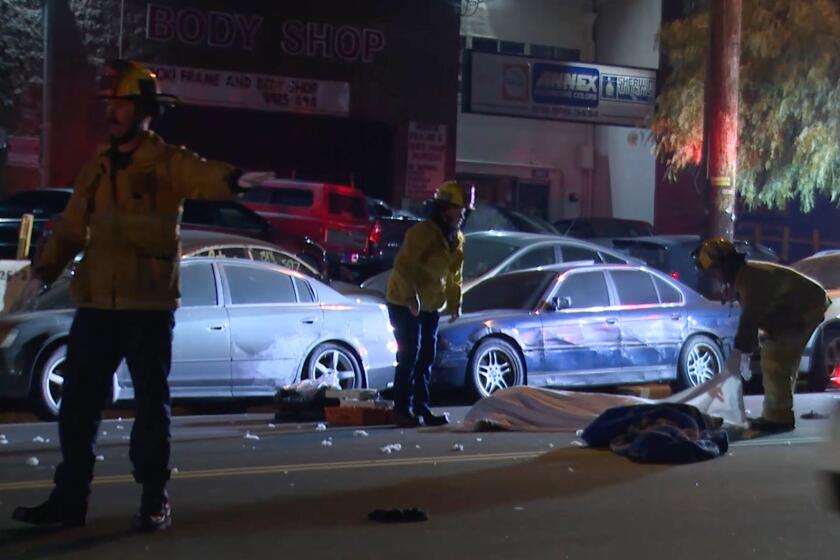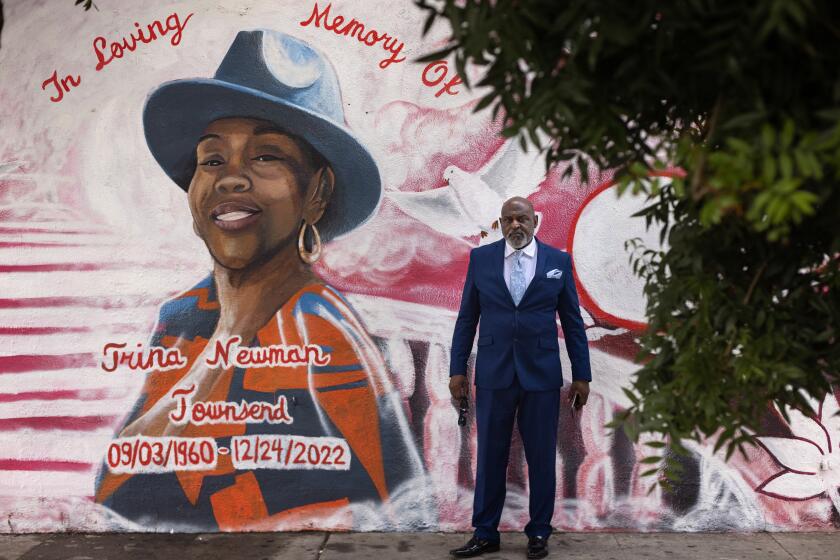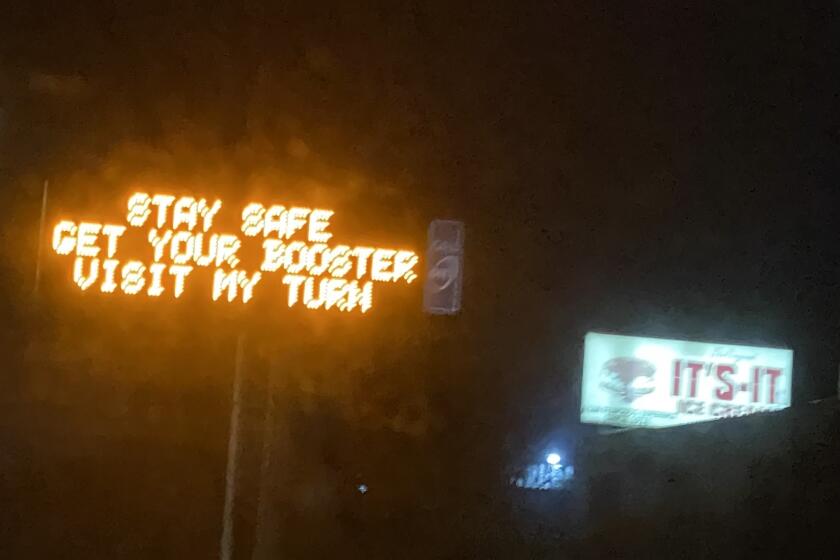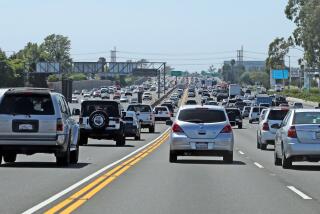Sorry, speeders: New bill would require speed-limiting devices in California cars
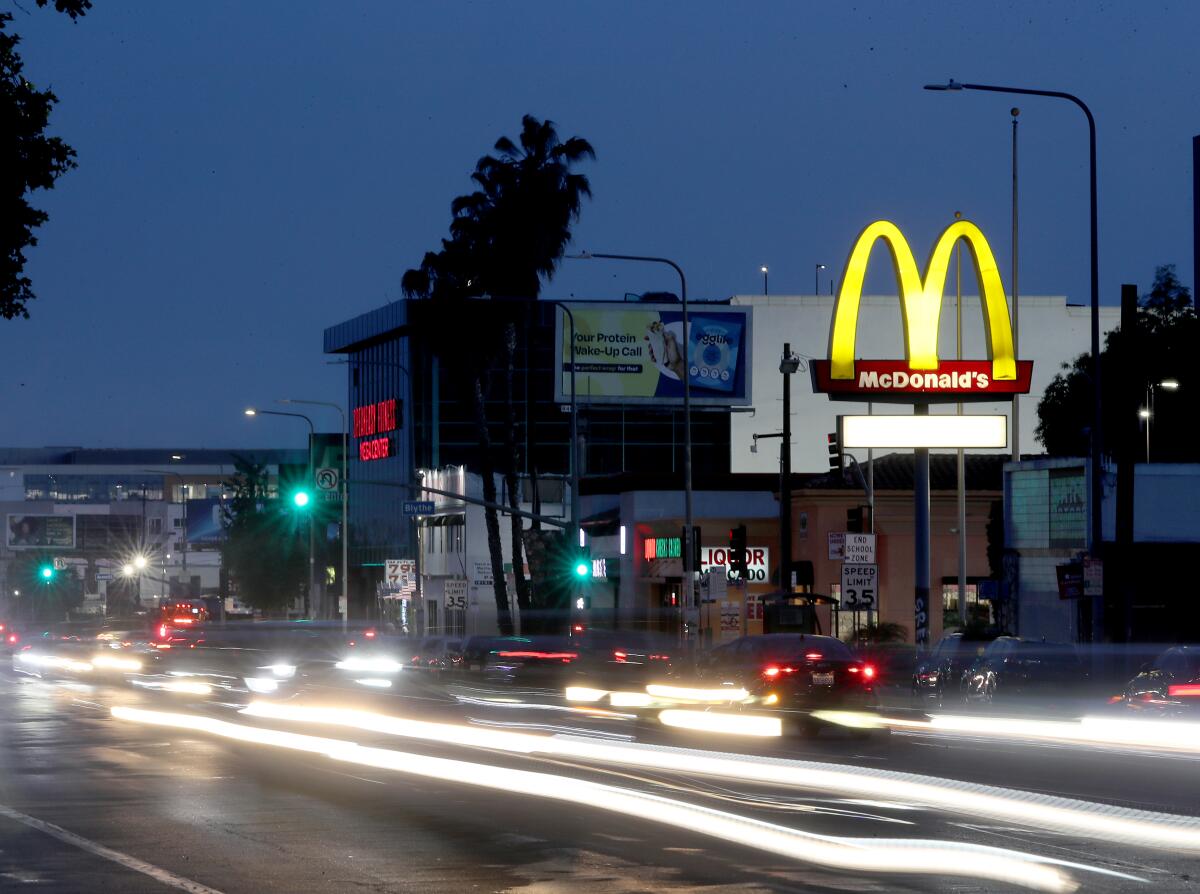
- Share via
What if you could not speed that much?
That’s the premise of a new bill in the California Senate that would require vehicles sold in the state to be equipped with speed governors to limit how fast they can go.
The proposal from Sen. Scott Wiener (D-San Francisco) is part of a package of bills that he hopes will reduce traffic injuries and deaths in the Golden State.
“There’s no reason why people should routinely be allowed to drive more than 10 mph above the speed limit,” Wiener said in an interview with The Times. “You can want whatever you want. But that doesn’t mean you’re allowed to do it, and that doesn’t mean you should be physically able to do it.”
In L.A., 336 people died in crashes in 2023 and more than half of them were pedestrians. That’s the highest number in more than 20 years and advocates are demanding action.
The measure, Senate Bill 961, would require every passenger vehicle, truck and bus manufactured or sold in California to have speed governors starting in 2027. The devices would use GPS technology or cameras to verify the speed limit in a particular area and slow a speeding vehicle down if it approaches 10 mph over the limit.
Wiener said he is open to changes in the bill — for example, whether to require active or passive speed governors.
Active speed governors would actually reduce the speed of cars that hit the 10 mph limit, while passive ones would make some sort of annoying sound or buzz to warn drivers to slow down.
The European Union passed legislation that will require passive speed governors in all cars sold in member countries starting in July.
For the first time, California is permitting speed cameras, including in L.A., where one South Los Angeles resident says cars are ‘now the weapons.’
The legislation is likely to be met with some opposition from certain trucking groups that have similarly opposed federal legislation regarding speed governors.
Todd Spencer, president of the Owner-Operator Independent Drivers Assn., opposes the legislation, which he believes is not the correct way to make roads safer. Spencer advocates for increased police presence to monitor speeders, but said that changes in speed are sometimes necessary to drive safely.
“There are times drivers may want to speed up enough to switch lanes, to move away from certain unsafe situations. Our preference is for drivers to have the maximum ability to do that. We don’t think technology or even most well-intentioned regulations should obstruct that,” Spencer said.
But Wiener says surging traffic deaths in California — 4,407 people died in crashes in 2022, a 22% increase from 2019 — make the legislation a safety imperative.
In Los Angeles, there were more traffic deaths in 2023 than homicides — the first time that has occurred in a decade.
“This is a technology that exists. It’s in operation right now, and it will save lives,” Wiener said.
The U.S. Federal Highway Administration is implementing a ban on all humorous and quirky electronic messaging on highway and freeway signs beginning in 2026.
While the senator acknowledged there would be pushback, he noted that every car safety requirement proposal has run into some degree of opposition before becoming a given. Wiener cited requirements for seat belts, child car seats and motorcycle helmets as examples.
Weiner’s package of bills introduced this week — which he has dubbed Speeding and Fatality Emergency Reduction (SAFER) on California Streets — would also require underride guardrails on trucks to prevent cars and motorcycles from being pulled under the bigger vehicles in a crash.
More to Read
Sign up for Essential California
The most important California stories and recommendations in your inbox every morning.
You may occasionally receive promotional content from the Los Angeles Times.

